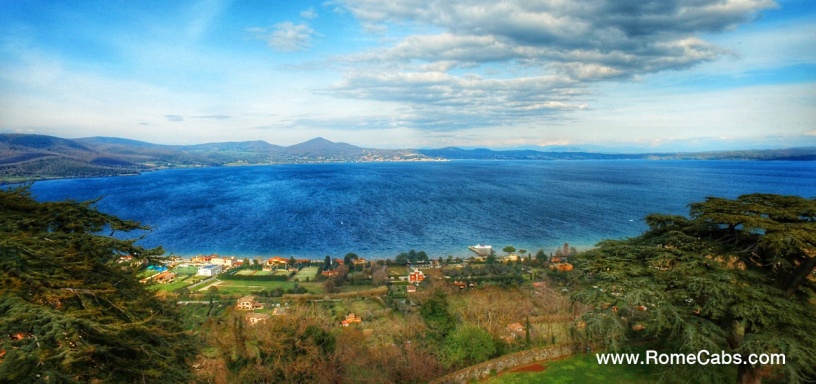Buongiorno and welcome to RomeCabs Italy Travel Blog! In the picturesque Lazio region of Italy is Lake Bracciano, one of Italy’s majestic lakes that offers an idyllic escape from the bustling city of Rome. Renowned for its pristine waters, historical charm, and breathtaking natural beauty, Lake Bracciano is the ideal destination for a day trip or a relaxing weekend getaway.
In this RomeCabs travel blog, we’ll explore the wonders of Lake Bracciano and its surrounding attractions that you can visit on a Rome countryside tour, a Pre-Cruise Tour, a shore excursion from Civitavecchia, or explore on your own independently.
.
Lake Bracciano: A Pristine Volcanic Crater Lake
.
Lake Bracciano, a captivating volcanic lake, boasts crystal-clear waters and stunning views. Surrounded by lush greenery and charming medieval towns like Bracciano, Trevignano Romano, and Anguillara Sabazia, this place is a visual masterpiece.
.
.
Lake Bracciano is more than just a mere lake, it’s a geological masterpiece intertwined with history. Nestled amidst the Sabatini Mountains, it’s deeply connected to Bracciano’s history and showcases Earth’s intricate geological evolution. Formed by ancient volcanic activity within a caldera, this lake’s creation is a testament to nature’s drama.
Yet, its significance goes beyond geology. Lake Bracciano plays a vital role in Rome’s water supply due to its pristine waters, enjoying well-deserved protection. The restriction on motorized boats maintains its tranquility, offering a serene haven for swimming and kayaking, preserving the lake’s pristine beauty.
.
Bracciano: An Enduring Italian Treasure
Bracciano, a captivating town along the shores of Lake Bracciano, blends its rich historical heritage with the beauty of the volcanic lake. Its medieval streets and lakeside promenade offer a step back in time. The town’s picturesque setting is perfect for leisurely walks and water-based activities like swimming and sailing. No wonder a day trip from Rome to Bracciano is on many people’s bucket list!
.
Bracciano Castle (Castello Orsini-Odescalchi)
The medieval Bracciano Castle, also known as Castello Orsini-Odescalchi, stands as a prominent landmark overlooking the lake. This 15th-century castle offers a journey into Italy’s rich history. Commissioned by Napoleone Orsini in the 15th century, it was later expanded and renovated by the influential Orsini family. The castle’s architecture, blending medieval and Renaissance styles, is a testament to Italian military architecture during the late Middle Ages.
.
.
The Bracciano Castle is exceptionally well-preserved, and it is open to the public, allowing visitors to explore its impressive collections of artifacts, paintings, and antique furnishings. The elegant staterooms offer a glimpse into the opulent lifestyle of the Renaissance aristocracy, adorned with frescoes and intricate stucco work.
Climbing to the top of the castle rewards you with a breathtaking panoramic view of Lake Bracciano and the surrounding countryside.
.
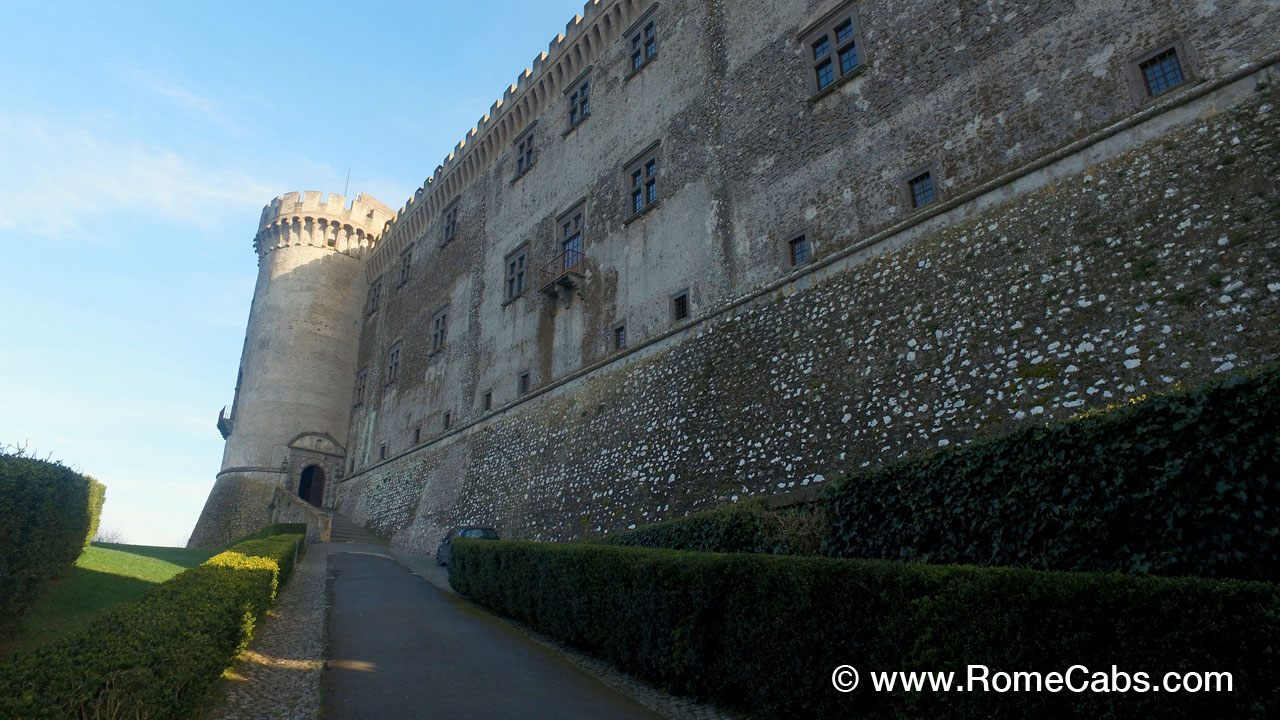
..
Lake Bracciano Beaches
Spend a relaxing day at one of the lake’s beaches, indulging in activities like swimming, sunbathing, or renting pedal boats and kayaks. The crystal-clear waters provide a serene backdrop for a leisurely day by the lake.
.
Special Events and Festivals in Bracciano
Throughout the year, Bracciano hosts cultural events and festivals, including the Chestnut Festival in late October. These events provide a unique opportunity to immerse yourself in the town’s vibrant community and experience the Italian way of life.
.
.
.
Anguillara Sabazia: Ancient History and Scenic Beauty
.
Along the pristine shores of Lake Bracciano is Anguillara Sabazia, or simply known as Anguillara, which is a hidden gem that harmonizes a rich history with breathtaking natural beauty. This lakeside town is a treasure trove of historical landmarks, tranquil promenades, and captivating stories.
The town’s unique name, Anguillara, has ancient Etruscan origins, possibly derived from “angui“, signifying eels. Anguillara was once celebrated for its eel fishing.
Anguillara’s history reaches far back in time, with evidence of human presence dating back to 5700 BC. The town itself traces its origins to the 1st or 2nd century BC when a Roman citizen, Rutilia Polla, owned a villa on the lake’s shores, which is now the site of the Church of Santo Stefano.
.
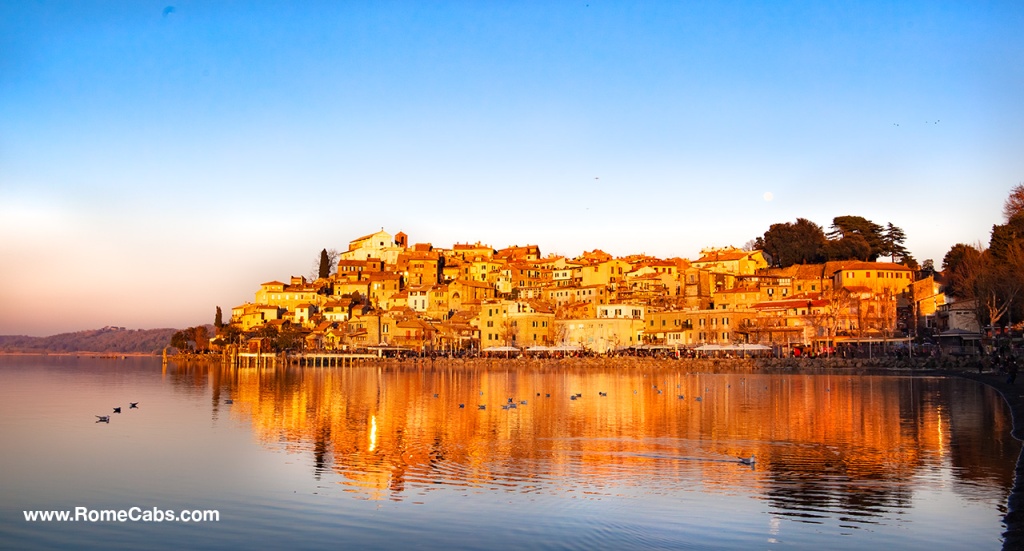
.
The Mighty Anguillara Family
The Anguillara family, of Norman origin, held significant influence in Latium during the Middle Ages and the Renaissance. The family’s name may be linked to the Italian word for “eel” (anguilla) or to the Roman Villa Angularia on a corner of the lake (in Latin, the word for corner is angulum). Count Ramone Anguillara and other family members played prominent roles in historical conflicts.
.
Lakeside Promenade: A Front-Row Seat to Beauty
Anguillara’s lakeside promenade offers an unparalleled view of the stunning lake. This long promenade along the shores of Lake Bracciano provides an ideal spot to appreciate the breathtaking beauty.
.
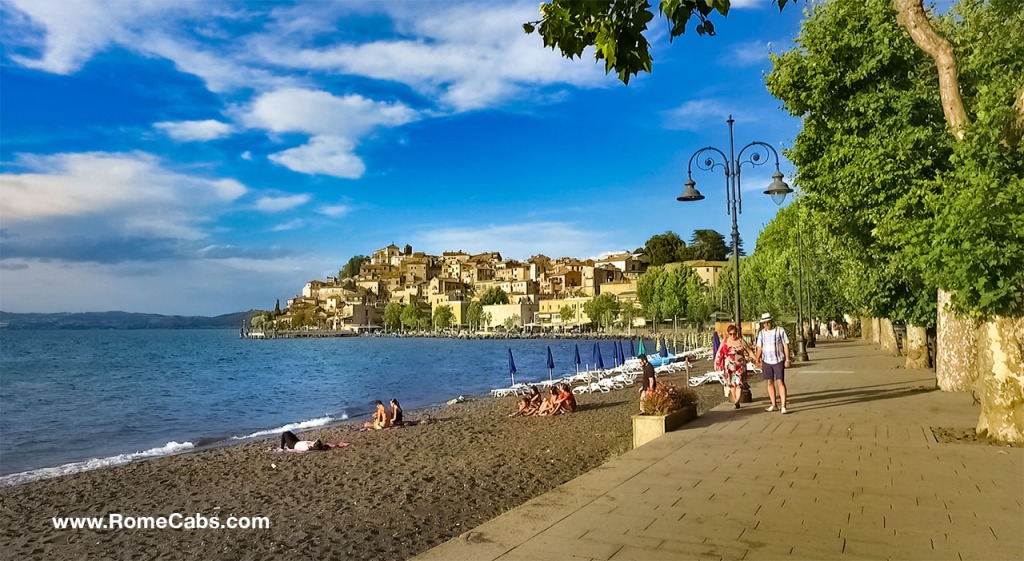
.
Lakeside Beach of Anguillara: Volcanic Sands
The lakeside beach in Anguillara comes to life in the summer, attracting visitors seeking respite from urban life. The distinctive black sands on these shores are a testament to the region’s volcanic history. The relentless erosion of volcanic rock and ash has contributed to this unique feature, offering an aesthetically pleasing reminder of geological forces at play. A day trip from Rome to Lake Bracciano to enjoy the beaches is a local Roman tradition.
.
Trevignano Romano: A Serene Oasis by Lake Bracciano
.
A day trip to Lake Bracciano must include a stop in Trevignano Romano (or simply Trevignano). A hidden jewel adorning the pristine shores of Lake Bracciano, this lakeside village beckons with its unique and tranquil charm. This lakeside town seamlessly blends a serene ambiance, captivating panoramas, and a fusion of historical allure with contemporary comforts, offering a full immersion into the natural beauty of Lake Bracciano, a glimpse into its storied past, and the opportunity to savor the flavors of traditional Italian cuisine.
.
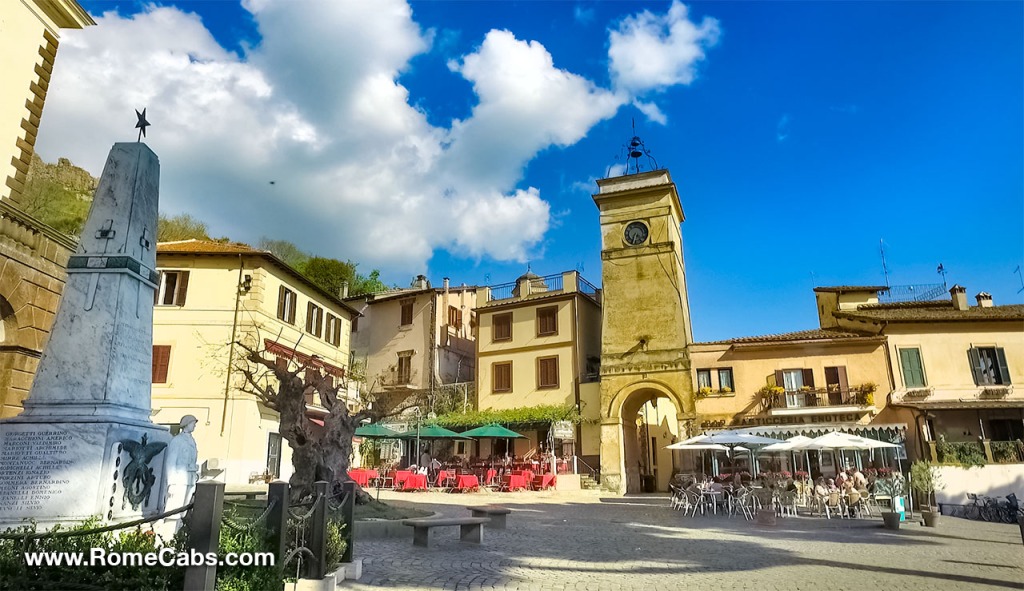
.
Trevignano’s fascinating history from ancient times
Trevignano’s captivating tale weaves back through the annals of time, creating a destination where history echoes through its cobblestone streets and medieval architecture. The town’s history is as deep as the waters that caress its shores, with roots that stretch back to a time before the ascendancy of the Roman Empire.
Evidence of human presence in the Trevignano area dates back to the prehistoric Paleolithic era, exemplified by the La Marmotta settlement in nearby Anguillara. This ancient town’s origins are entwined with Etruscan settlements, flourishing for centuries and revealing tombs dating from the 8th to 6th centuries BC in the northern hills of Trevignano.
.
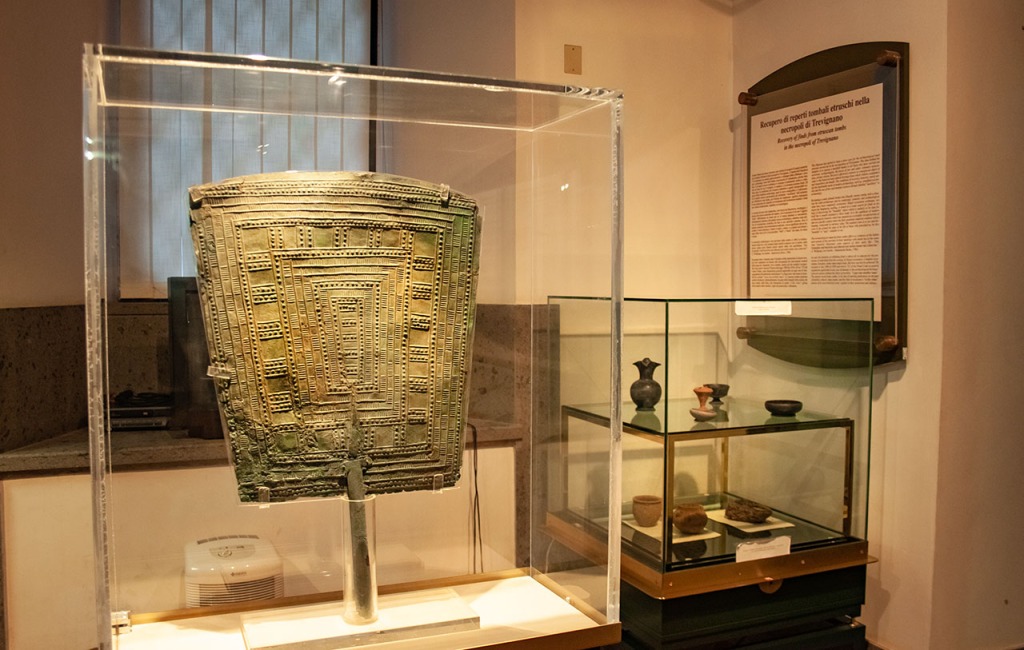
.
These tombs have yielded well-preserved artifacts, some of which are on display at the local Roman Etruscan Museum. When the Etruscan city of Veii fell to the Roman expansion of the Italian peninsula in 387 BC, the Romans established their dominance in the region, constructing villas along the lakeshore, some of which now rest beneath the lake’s surface. Notable among the Roman-era constructions are the splendid imperial thermal spa and villa in Vicarello, as well as the Aqueduct of Trajan, built in a later period.
The Romans, famed for their strategic acumen, recognized the potential of this idyllic lakeside setting. They established a presence here, with Trevignano becoming a place of retreat and leisure for Roman nobility. The ancient Romans reveled in the serene beauty of Lake Bracciano, using it as an escape from the bustling city of Rome.
.
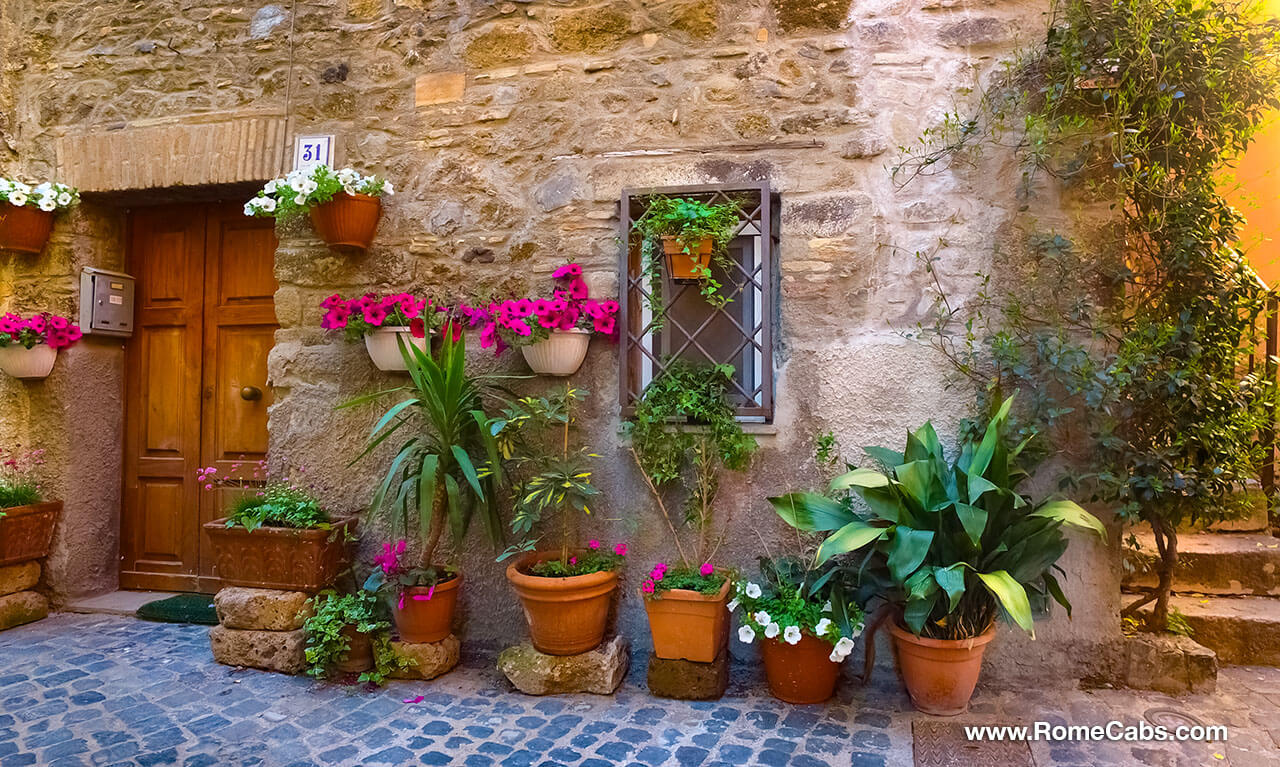
.
Throughout the medieval age, Trevignano’s ownership transitioned through several noble families, including the Orsini and the Prefetti di Vico. The Orsini family fortified the town with a formidable fortress that once dominated its skyline but met its demise during the legendary conflict between the Borgia and Orsini families. The town subsequently came under the dominion of prominent Roman families such as the Odescalchi, Conti, Torlonia, and Del Drago among others.
During the Renaissance, Trevignano was under the control of the Papal States and became a favored destination for popes seeking respite and reflection. The town’s role as a Papal retreat has left a distinct mark on its history, evident through the historical sites and buildings that adorn the town.
.
Exploring Trevignano Today
A visit to Trevignano today is an immersive journey into history, culture, and natural beauty, all effortlessly entwined with the charm of a picturesque lakeside town. The serene setting sets the stage for a relaxed and peaceful experience.
Lake Bracciano is a major attraction for visitors and locals alike. Its crystal-clear waters invite you to swim, sail, or simply relax by the shore. The absence of motorized boats creates a peaceful atmosphere, perfect for kayaking or paddleboarding. The lake’s pristine condition makes it an ideal spot for water activities and leisurely afternoons.
.
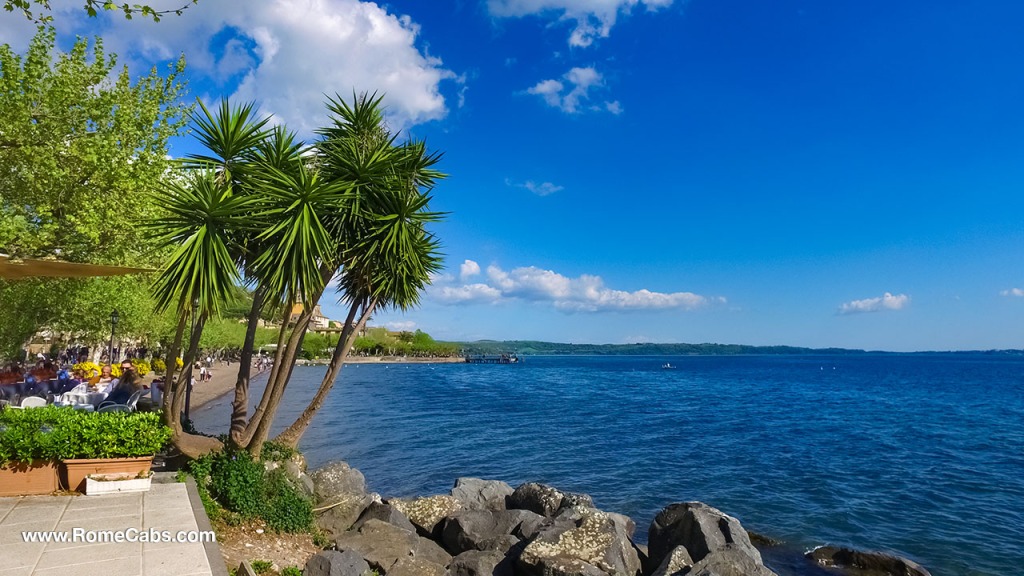
.
One of the first things that capture your attention is the stunning lakeside promenade. This scenic boardwalk, generously lined with trees and flowers, is perfect for a leisurely stroll or a romantic evening. The promenade offers breathtaking views of Lake Bracciano’s crystal-clear waters and the surrounding hills, making it an ideal spot to watch the sun dip below the horizon, casting a warm, golden glow over the lake.
Trevignano Romano’s old town is a maze of winding cobblestone streets and historic buildings, each with its unique character and story to tell. The streets are adorned with artistic and architectural wonders, from intricate doorways and charming balconies to street art and sculptures. Exploring the town on foot reveals a treasure trove of artistic and cultural surprises.
**Piazza Vittorio Emanuele: The central square is the heart of the old town, a bustling hub of activity. It’s adorned with cafes and shops, creating a lively atmosphere. Here, you can savor a cappuccino at a local cafe, shop for artisanal crafts, or simply enjoy people-watching as the world passes by.
.
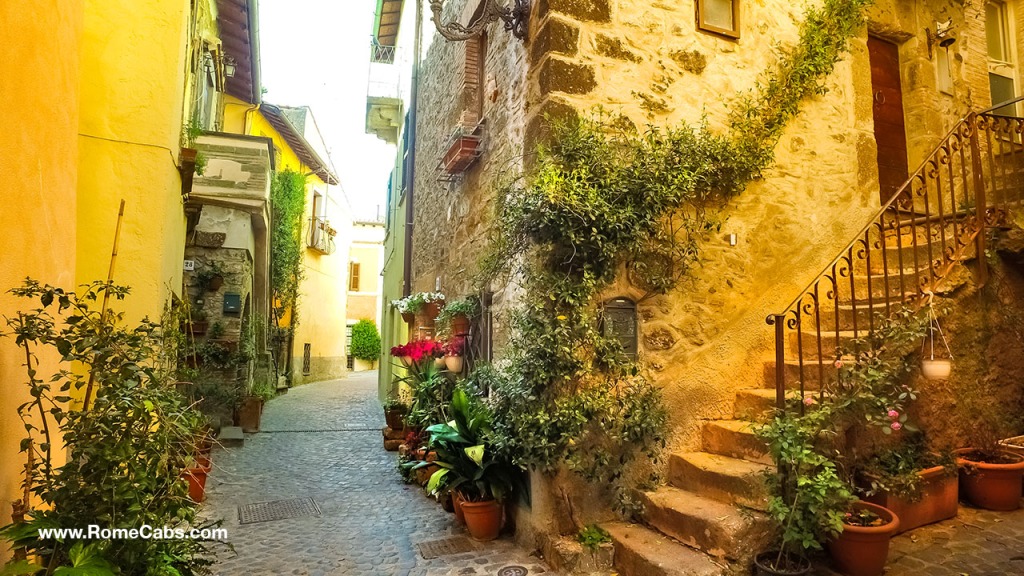
.
Trevignano’s Local Cuisine: A Culinary Delight
No visit to Trevignano Romano is complete without indulging in the local cuisine. The town is known for its traditional trattorias and restaurants that serve mouthwatering Italian dishes. The proximity to Lake Bracciano means an abundance of freshly caught fish, particularly the local specialty, coregone fish. If you love seafood, head to Trevignano!
Don’t forget to sample some delicious Italian gelato or indulge in a sweet pastry or dessert at one of the local bakeries. The sweet treats in Trevignano Romano are as delightful as they are delectable.
.
Sunday Market Day in Trevignano
Most Sundays, the lakeside promenade transforms into a bustling market where visitors can explore vintage and antique items, clothing, crafts, food, accessories, and more.
.
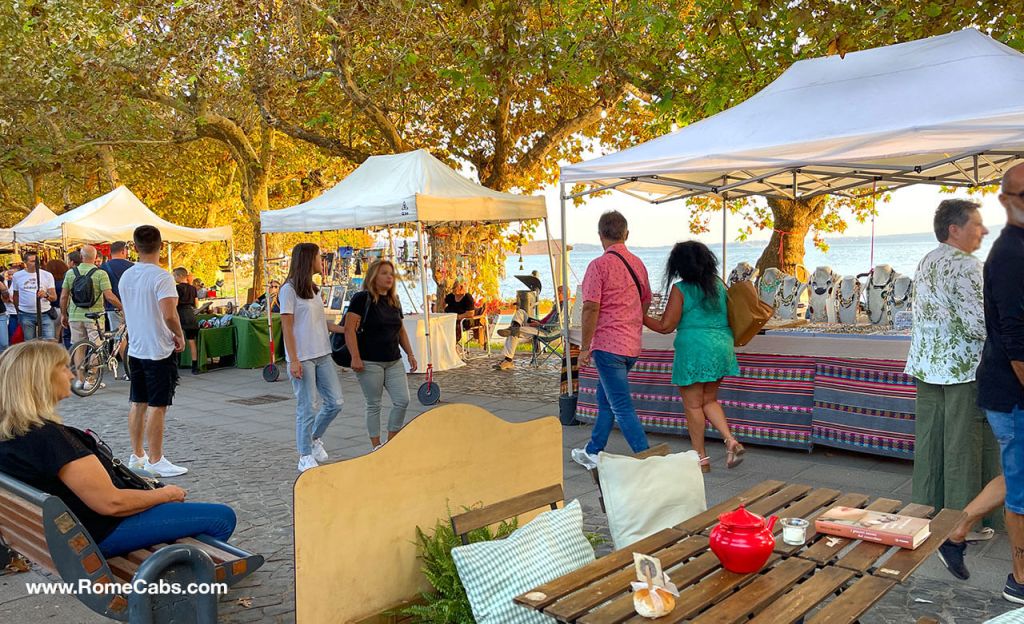
.
Trevignano today is a delightful fusion of history, natural beauty, and a slow-paced, relaxed way of life. Whether you’re interested in history, nature, or simply seeking a tranquil escape, Trevignano offers a unique and memorable experience where ancient tales intertwine with the serenity of Lake Bracciano.
A day trip to Lake Bracciano from Rome unveils a captivating blend of natural beauty and rich history. The charming towns of Bracciano, Anguillara Sabazia, and Trevignano Romano offer glimpses into Italy’s cultural tapestry with their ancient roots, medieval streets, and lakeside promenades. These towns beckon you to savor the taste of traditional Italian cuisine inspired by the lake’s bounty.
A day here is a journey that evokes the senses, kindles the imagination, and leaves an enduring memory of the beauty and culture of Italy. As the sun sets over Lake Bracciano, you’ll carry with you the magic of this place and the timeless charm of these lakeside towns, knowing that you’ve experienced a slice of Italy’s cultural and natural heritage.
.
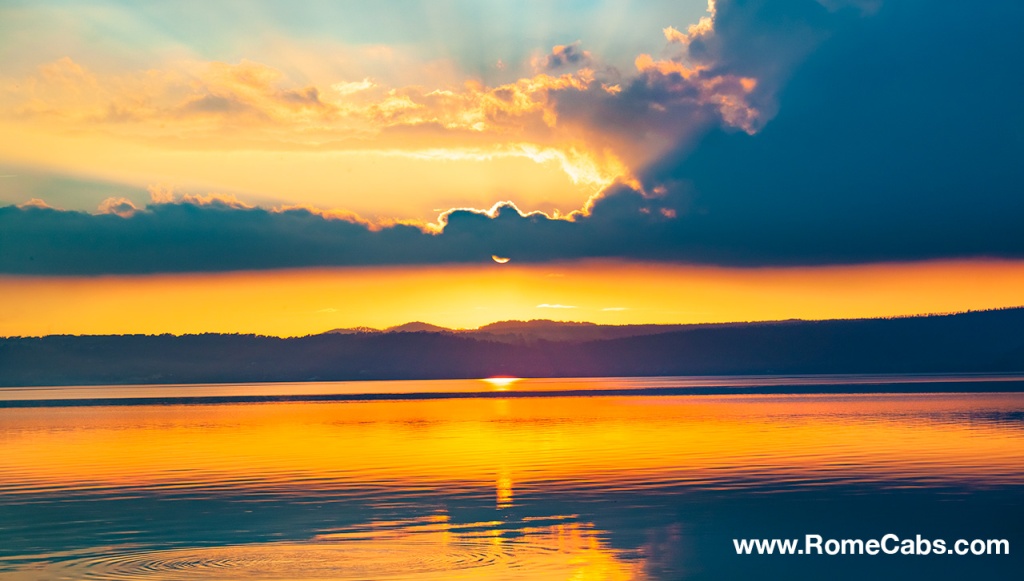
.
.
